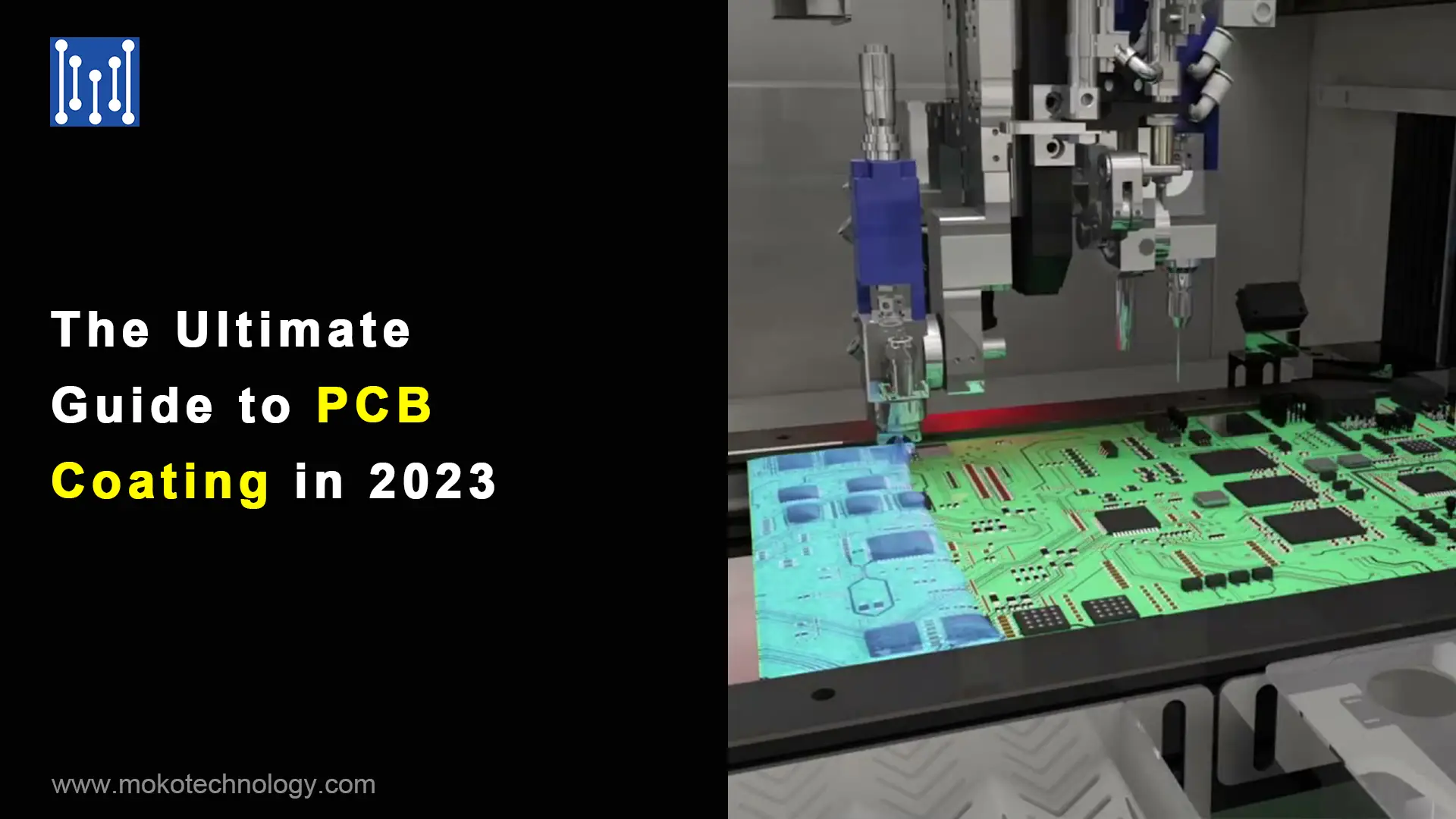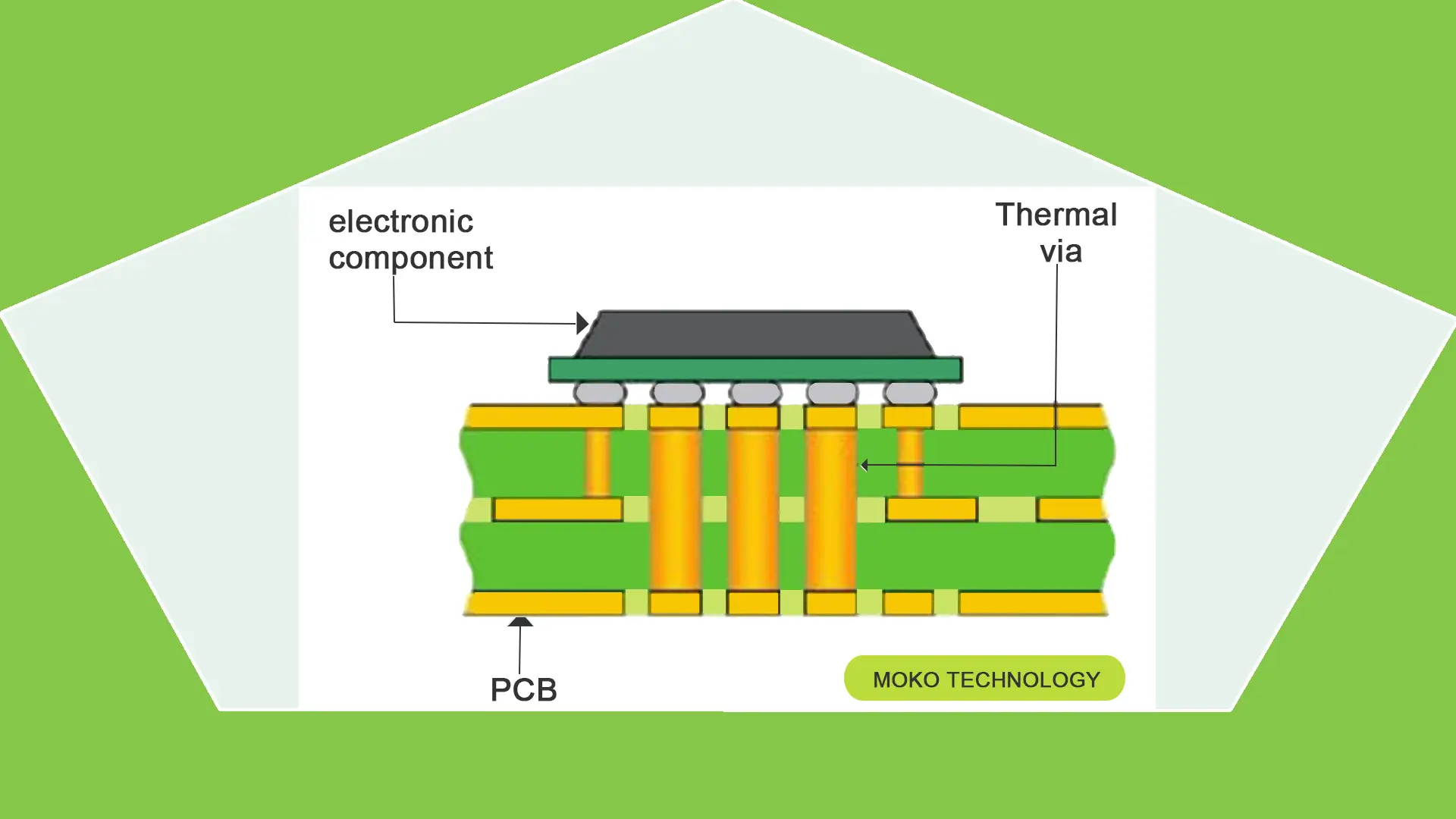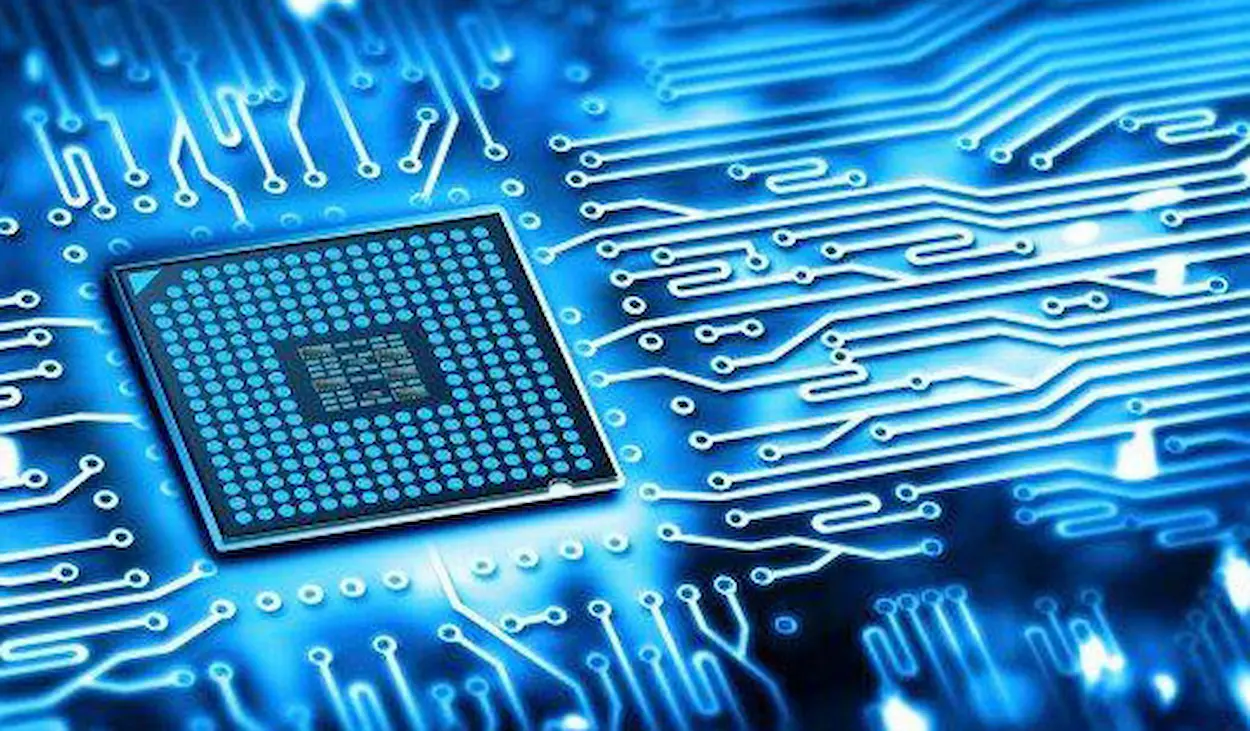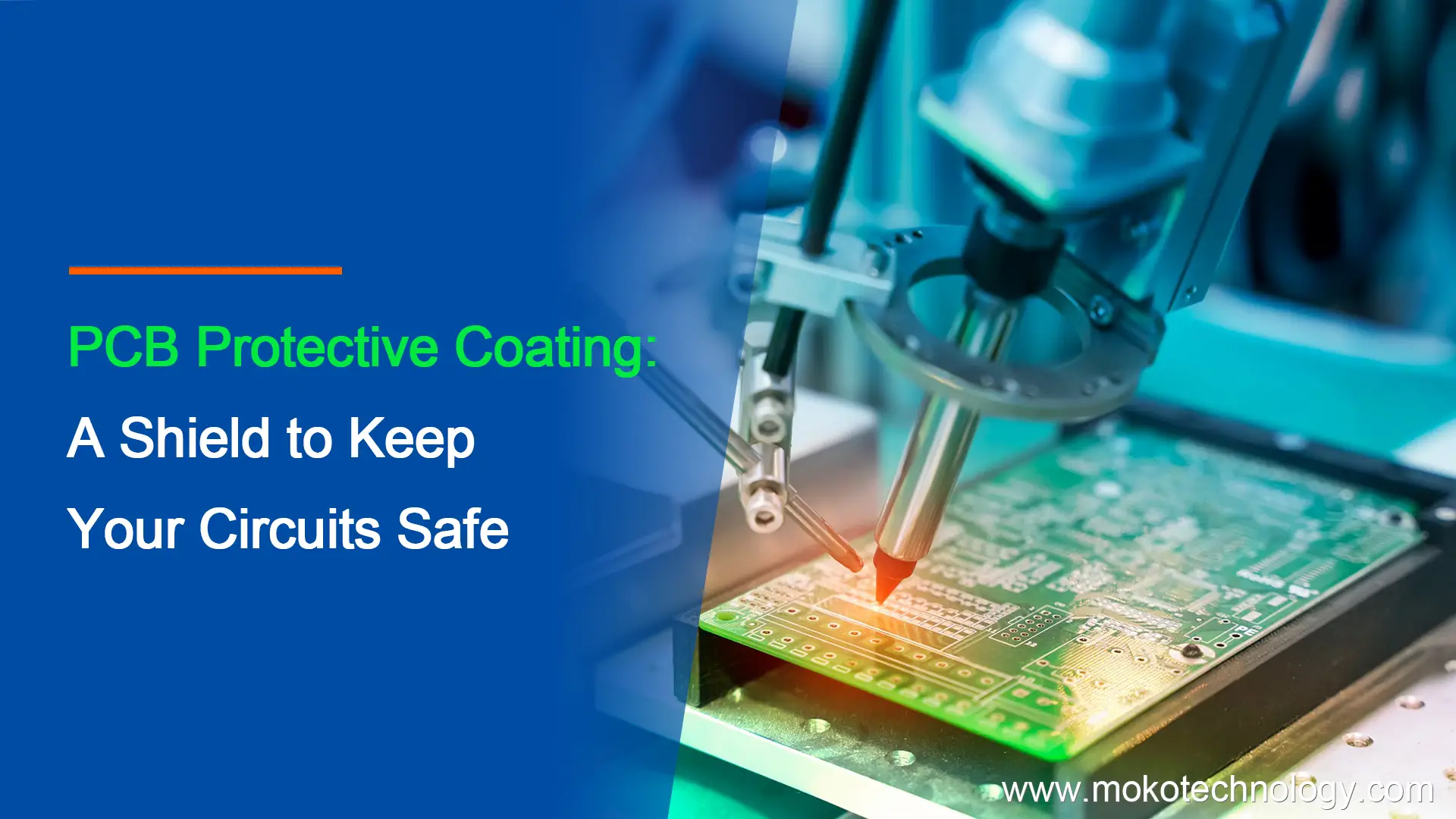PCB'ler çeşitli evlerde yaygın olarak kullanılmaktadır., Sanayi, askeri, ve otomotiv ekipmanları. Ekipmanın çalışmasını sağlamak ve hizmet ömrünü uzatmak için, devre kartlarının ve tahtadaki bileşenler her türlü tehlikeden korunuruz, içlerindeki herhangi bir hata cihazın performansını etkileyebilir ve hatta tüm cihazın arızalanmasına neden olabilir.. PCB kaplama, PCB'yi korumanın çok etkili bir yoludur.
Bu nihai kılavuzda, PCB kaplamalar hakkında bilmeniz gereken her şeyi burada inceleyeceğiz. 2023 – malzeme türlerinden uygulama yöntemlerine ve kalite standartlarına kadar. Doğru kaplama stratejisiyle, ürünlerinizdeki PCB'lerin çalışma ömrünü önemli ölçüde uzatabilirsiniz. Başlayalım!
PCB Kaplama Nedir??
PCB kaplama, PCB'yi korozyon gibi olumsuz faktörlerden koruyan bir teknolojidir., nem, ve devre kartı ve elektronik bileşenlerin yüzeyine ince ve iletken olmayan bir tabaka uygulayarak fiziksel şoklar. Baskılı devre kartı kaplamalı, PCB ve elektronik bileşenlerin devre arızası olasılığı azalır, ve nihai elektronik ürünün hizmet ömrü de uzatılabilir.
PCB Kaplama Çeşitleri
Kullanılan malzemeler açısından, PCB kaplamaları beş tipe ayrılabilir:
- Akrilik – uygulaması ve onarımı kolay, iyi nem ve aşınma koruması ile özellikli, ve iyi mekanik mukavemet. Ancak bu tür bir kaplama, zayıf solvent direncine ve düşük sıcaklık direncine sahiptir..
- Poliüretan – akrilikle aynı, mükemmel nem ve aşınma direnci sağlar, ek olarak, solventlere karşı daha iyi direnç sağlar. Dezavantajı, ancak, kaplamanın çıkarılmasının zor olması.
- Epoksi – mükemmel mekanik mukavemete sahiptir ve aşınmaya ve neme karşı iyi koruma sağlayabilir. Ancak epoksi kaplamaların esnekliği ve sıcaklık direnci zayıftır ve onarılması zordur..
- Silikon – bu tip kaplama nemle kürlemede mevcuttur, UV kürü, ve ısı kürü, mükemmel sıcaklık ve nem direncine sahiptir, ancak aşınma direnci ve mekanik dayanım açısından zayıf performansa sahiptir..
- Paralyen – paralyen kaplamalar her yüzey için mevcuttur, havacılık ve medikal uygulamalarda kullanılan cihazlar için mükemmel bir seçenektir, PCB'leri organik çözücülerden koruyabildikleri için, inorganik reaktifler, ve asitler. Dezavantajları, yeniden işlenmesinin zor olmasıdır..
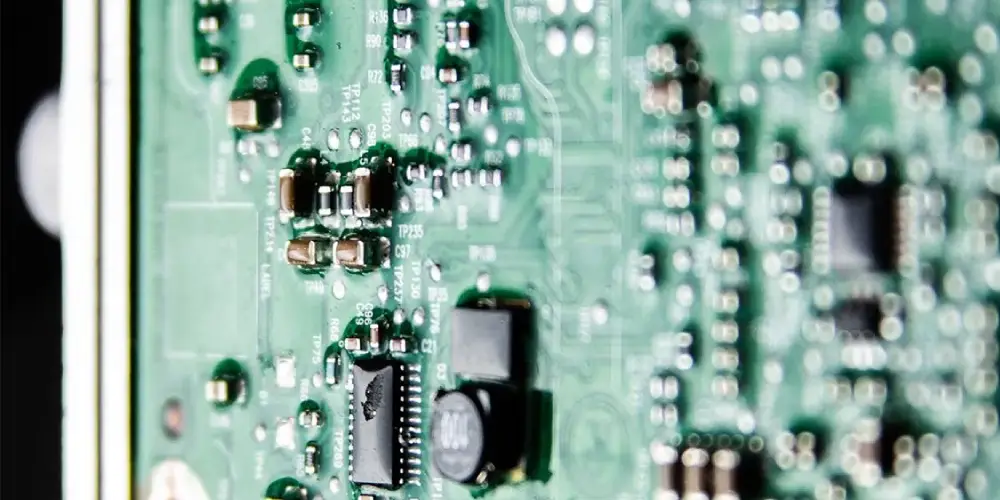 Doğru PCB Kaplama Malzemesini Seçmek
Doğru PCB Kaplama Malzemesini Seçmek
Artık farklı PCB kaplamalarının özelliklerini anladığımıza göre, o zaman projeniz için en uygun kaplamayı seçmek için hangi faktörleri dikkate almalıyız?? İyi, aşağıda bazı önemli hususları listeledik:
- Çalışma ortamı
Sıcaklık – PCB yüksek sıcaklıklara maruz kalacaksa, silikon veya poliüretan gibi kaplamalar akriliklerden daha uygundur. Çok düşük sıcaklıktaki ortamlar için, parilen üstündür.
Nem – Nem direnci kritikse, parilen ve bazı üretanlar su buharı iletimine ve emilimine karşı en iyi korumayı sağlar.
Kimyasal – Aşındırıcı kimyasal ortamlar için, parilen ve üretan genellikle en iyi kimyasal bariyer özelliklerine sahiptir.
UV'ye Maruz Kalma – Akrilikler iyi UV direncine sahiptir. Silikonlar ve parilen de UV'ye dayanabilir.
- Elektriksel Özellikler
Dielektrik gücü – Bu, PCB izlerinin taşıyacağı maksimum voltajı aşmalıdır. Parilen ve silikon yüksek dielektrik dayanıma sahiptir.
Yalıtım direnci – Daha yüksek megohm değeri daha iyi elektrik yalıtımı anlamına gelir. Kaçak akımları önlemek için önemli.
Termal iletkenlik – Isıyı dağıtma yeteneği. Güç elektroniği için kritik. Silikon kaplamalar en iyi termal iletkenliği sunar.
- Mekanik özellikler
Sertlik – Epoksiler ve bazı üretanlar gibi daha sert kaplamalar çizilmeye/aşınmaya karşı daha fazla direnç sağlar.
Esneklik – Silikon ve parilen kaplamalar esnekliği korur, dinamik esneme devreleri için önemlidir.
yapışma – Yüzey kimyası gibi özellikler, kaplamanın yüzeye ne kadar iyi bağlandığını belirler. PCB substratı.
- Maliyet
PCB kartı kaplamanın maliyetleri, hammadde kimyası gibi faktörlerden kaynaklanmaktadır., işleme ekipmanı ihtiyaçları, üretim süresi, uygulamanın karmaşıklığı, kaplama kalınlığı, onarım yeteneği, ve hacim. Genel olarak, maliyet analizi, kaplama malzemesi ve uygulama prosesi masraflarını, son uygulamanın performans gereklilikleri ve çalışma koşullarıyla karşılaştırır. Malzeme uyumluluğu gibi faktörlerin değerlendirilmesi, İşleme metodu, ve hedeflenen ömür boyu güvenilirlik, teknik ihtiyaçları hâlâ karşılayan en uygun maliyetli kaplamanın seçilmesine olanak tanır.
PCB Kaplama Prosesi
Baskılı devre kartlarına koruyucu kaplama uygulamak dikkatli bir hazırlık gerektirir, başvuru, kürleme, ve test:
- Yüzey hazırlığı
Yapışmayı arttırmak için kaplamadan önce levhalar iyice temizlenmelidir.. Yaygın teknikler arasında solvent temizleme ve plazma/korona yüzey işlemleri yer alır.
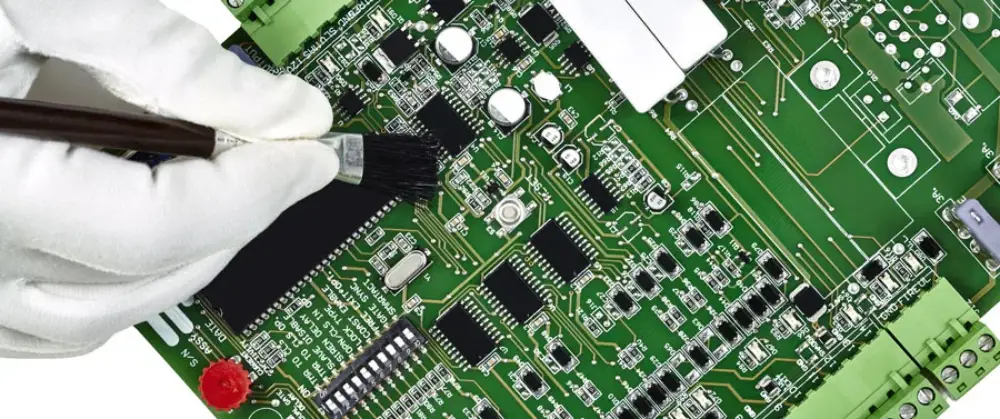
- Kaplama Uygulaması
Baskılı devre kartı kaplamasını uygulamanın farklı yöntemleri vardır, onlar:
- Manuel püskürtme
Bu yöntem, zaman alıcı bir süreç olduğu için düşük hacimli üretim çalışmaları için uygundur.. Normalde, kaplamayı uygulamak için bir aerosol kutusu veya el tipi püskürtme tabancası kullanıyoruz, ve püskürtmeden önce, kaplama gerektirmeyen alanların kaplanması gerekir. Manuel işlem nedeniyle kaplama etkileri farklı partiler arasında biraz farklı olacaktır..
- seçici kaplama
Programlanmış robotik püskürtme nozulları kullanarak devre kartlarındaki belirli alanlara kaplama uygulayan otomatik kaplama işlemini ifade eder., ve püskürtülmeyecek alanları örtmeye gerek yoktur. Bu süreç, yüksek verimlilik ve doğruluk ile öne çıkar., yüksek hacimli üretim için uygun.
- Daldırma
Bu yöntem için, PCB'ler önce kaplama çözeltisine daldırılacak ve ardından geri çekilecektir.. Daldırma ve çekme hızı gibi birçok faktör kaplama etkisini etkiler., daldırma zamanı, vb. Kaplama işleminden önce gerekli kapsamlı maskeleme vardır, bu nedenle her iki taraf için kaplama gerektiren PCB'ler için uygundur.
- fırçalama
Belirli alanlara kaplama uygulamak için bir fırça kullanılır, ve esas olarak tamir ve yeniden işleme için kullanılan bir yöntemdir.. İşlem çok zaman alır ve çok emek gerektirir, son kaplama etkisi operatörün uzmanlığına bağlıdır.
- Kürleme/Kurutma
Yaygın kürleme yöntemleri arasında termal kürleme yer alır, UV kürü, ve nem tedavisi. Kaplamaların aşırı derecede kırılgan hale gelmeden tamamen çapraz bağlanmasını sağlamak için kürleme sırasında sıkı süreç kontrolleri hayati öneme sahiptir. Kürleme yöntemi, polimer kimyasına uyacak ve verimlilik ve performans ihtiyaçlarını karşılayacak şekilde seçilir.
- Test yapmak
Test, istenen özellikleri elde etmek için çeşitli çevresel koşullar altında devre yalıtımlı kaplamanın performans aralığını ve sınırlamalarını kontrol etmek için önemli bir aşamadır..
İdeal bir kaplama aşırı yapışma özelliğine sahiptir., iyi elektriksel özellikler, ve düşük nemli fiziksel özellikler. Kaplama testi için bu testler hem temel hem de ileri düzey testleri içerir.. İlk, temel testler, hızlandırılmış nemi ve elektrik performansını kontrol eder. İkinci, gelişmiş testler tuz buharını kontrol eder, hızlı çevresel değişim, ve sıcaklık sınırı.
PCB Pano Kaplama Standartları
İçinde konformal kaplama, Askeriye gibi belirli koşullar altında kullanılmasını gerektiren bir dizi PCB kaplama standardı vardır., otomobil, evde kullanım, vb. En yaygın olarak uyumlu kaplamalar, MIL-I-46058C ile yakından ilgili olan MIL-I-46058C veya IPC-CC-830B spesifikasyonu için uygundur..
MIL-I-46058C: Endüstride ortak bir konformal kaplama standardı, Askeri yalıtım bileşiği olarak da bilinir. MIL tarafından yetkilendirilmiş herhangi bir laboratuvardan test yapılmasını gerektirir ve devre dışı bırakıldıktan sonra bile kullanılmaya devam eder. 1998 yeni tasarımlar için. Bu test, standart bir Nitelikli ürün listesi gerektirir (QPL).
Def Stan 59/47: 46058C'ye benzer bir standart, askeri kullanım için üst düzey cihazları kaplamak için kullanılır, ancak önce Birleşik Krallık Savunma Bakanlığı'nın bunları onaylaması gerekir..
IEC 61086: 46058c'ye benzer gerekliliklere sahip tedarikçi tarafından kendi kendini belgelendirmeye dayalı bir standart. Uluslararası Elektroteknik Komisyonu yönetir.
IPC-CC-830B: 46058C'ye benzer aktif olarak kullanılan ve sürekli güncellenen standart, 46058C devre dışı kaldığında tanıtıldı. Bu özelliklere uyan 46058C için standartlaştırılmış malzeme. QPL sağlanmadığı için test yapılmaz.
UL94V0: Bir FR4 substratı üzerinde kendiliğinden sönmenin uygun kaplama özelliği ile ilgilidir. V1, V1 ve V2'nin ardılları olduğu ulaşılabilir en yüksek kategoridir..
